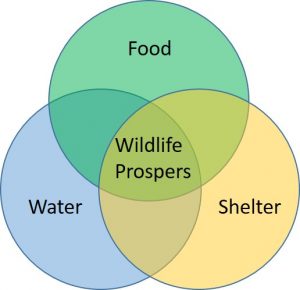 Integrated Pest Management
Integrated Pest Management
All organisms, including wildlife, require three basic elements to survive and grow:
- Food
- Water
- Shelter
Some add a fourth item, space. Remove an animal’s access to any one of these elements and it will not survive.
Integrated Pest Management (IPM) considers the animal’s life-cycle, its needs, and the needs of the person suffering damage to create the most cost-effective plan to manage the damage.
People who practice IPM problem-solving methods realize that 100% damage control often is not practical. However, we do know that reducing the availability of food, water, and shelter will go a long way in reducing the need to remove animal.
By considering environmental impacts and client needs, those who use IPM methods can find the best plan of action.
Sometimes management is accomplished by
- habitat modification, such as capping a chimney.
- timing of activities, such as when certain crops are planted.
- direct removal, such as trapping the offending animal.
No one method will be the best solution in every situation. Sometimes, the best strategy is to use a number of techniques to achieve the desired results.
The key is to recognize that there is no single solution to wildlife damage management. Those who are successful in managing damage understand the animal, its behaviors, the environment, and that a number of techniques may be needed to reduce the damage.
Publications
Beasts Be-Gone! – A Practitioner’s Guide to IPM in Buildings. 2000. Cornell University IPM.
Resolving Human-Nuisance Wildlife Conflicts – 2013. University of Georgia. Outlines basic principles for dealing humanely with nuisance wildlife.
Midwest Tree Fruit Management Handbook – University of Kentucky. Chapter 4 deals with wildlife.
Land Owner’s Guide to North American Predators – (PDF) Utah State University-Berryman Inst.
Managing Nuisance Animals & Associated Damage Around Your Home – 2012. Univ. of Tennessee